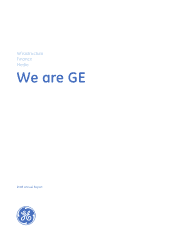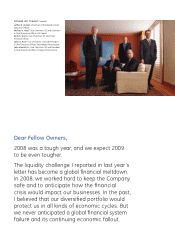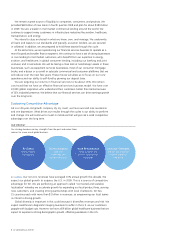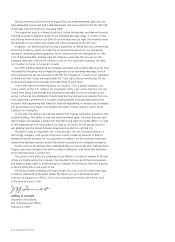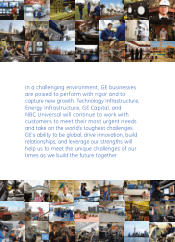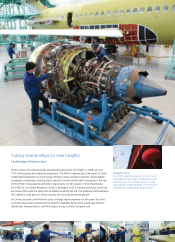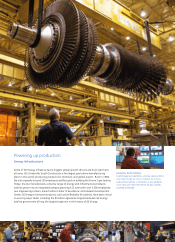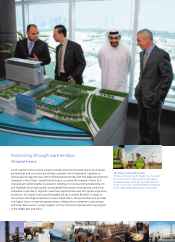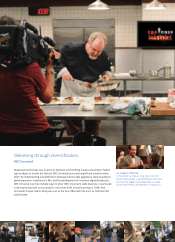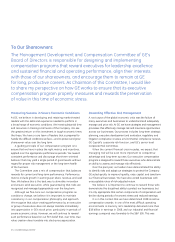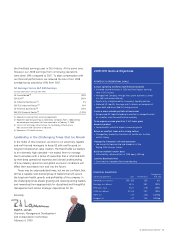GE 2008 Annual Report Download - page 7
Download and view the complete annual report
Please find page 7 of the 2008 GE annual report below. You can navigate through the pages in the report by either clicking on the pages listed below, or by using the keyword search tool below to find specific information within the annual report.
In the U.S., stimulus will target clean energy and smart grid technology. GE is well
positioned to capitalize on these investments. We have a $7 billion renewable energy
business with solid positions in wind and solar energy. We are deploying smart
grid technology with key utility customers such as Pacific Gas and Electric Company,
American Electric Power, and Florida Power & Lighting. This is an approximately
$635 million business today, but will grow substantially in the next few years.
Similarly, we have built a $2 billion business in Healthcare Information Technology,
where we are working with key customers to improve the quality of patient care at
a lower cost. For instance, we are collaborating with industry thought leaders, including
Intermountain Healthcare, to develop an electronic health record. We have invested
jointly, co-located our teams, and set common processes and standards. There are also
ongoing studies in healthcare information technology with Mayo Clinic and the University
of California-San Francisco Medical Center. We will help lead the healthcare industry
in transforming information management with a technology foundation.
Outside the U.S., government investments will target more basic infrastructure.
In Iraq, we entered a $3 billion turbine agreement to meet the critical need to re-electrify
this country. We will deliver the most flexible technology for the best value. In India
and South Africa, we are pursuing $5 billion of locomotive orders. These projects are
essential to meeting national energy efficiency, transportation, and environmental goals.
In China, we are partnering with Commercial Aircraft Corporation of China, LTD (COMAC),
as they develop an in-country commercial aviation industry. This is expected to generate
multiple new business opportunities for GE. In Russia and Qatar, we are partnering with
governments to improve healthcare, representing $1 billion of potential growth.
Governments will invest to stimulate their economies, solve societal problems, and
create jobs. GE’s broad portfolio and expertise position us as a natural partner. Tackling
important problems together will require teamwork and respect between business,
government, and society. We know how to do this and intend to play an important part
in solving these essential challenges.
Create a More Focused GE Capital Finance
Mike Neal’s GE Capital Finance business earned nearly $9 billion in 2008. Against the
background of the global credit crisis, his team moved quickly to improve our liquidity,
strengthen our capital base, reduce our cost structure, and control our losses.
In the past, investors asked me what was our target percentage for earnings
contribution from financial services and I said below 50%. Going forward we expect 30%
of our earnings to come from financial services. I never envisioned getting to our target
in this fashion, but nevertheless we now have a more heavily weighted industrial portfolio.
Did we end up with too much exposure in certain areas during the credit bubble?
Maybe, a few. Today, I wish we had less exposure to commercial real estate and
U.K. mortgages.
However, while trillions of dollars of value have been lost at many financial institutions
by investing in structured investment vehicles (SIVs), collateralized debt obligations
(CDOs), and credit default swaps (CDSs), our risk discipline kept us out of these markets.
Moreover, our decision to exit $150 billion of insurance assets earlier this decade
protected us from even greater volatility.
“Service is more robust in a downturn because it creates value
for our customers. Service value for our customers comes from
two streams: customer efficiency through system performance
and energy savings; and customer productivity through
process improvement and data management.”
ge 2008 annual report 5

